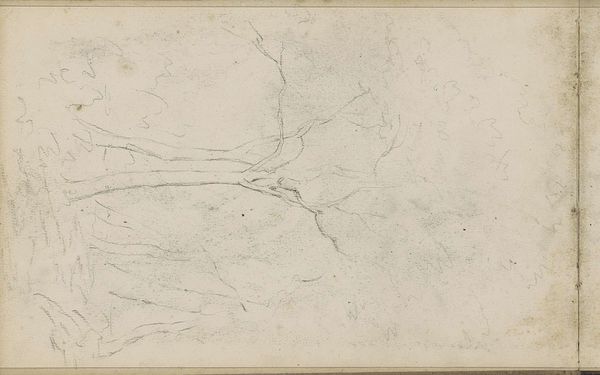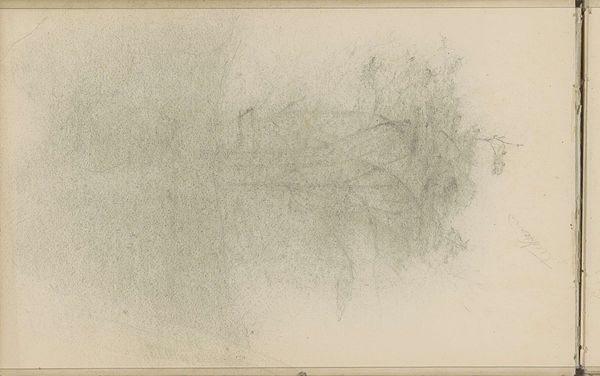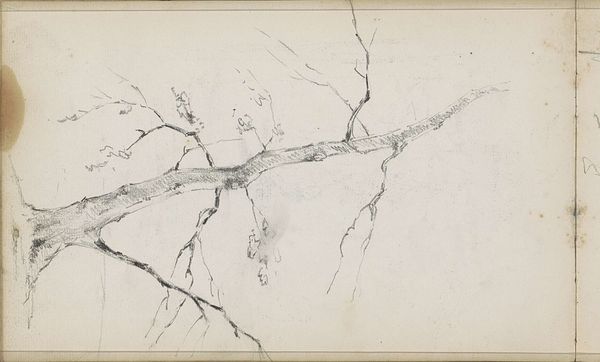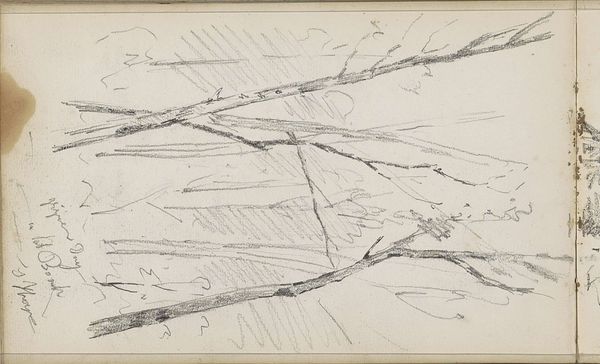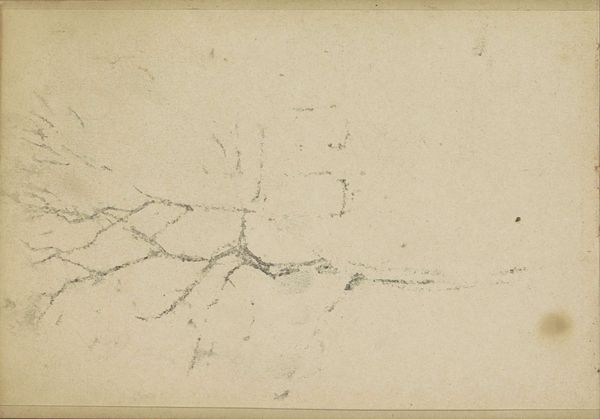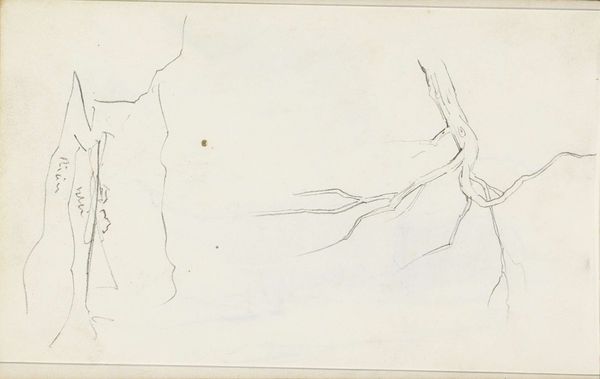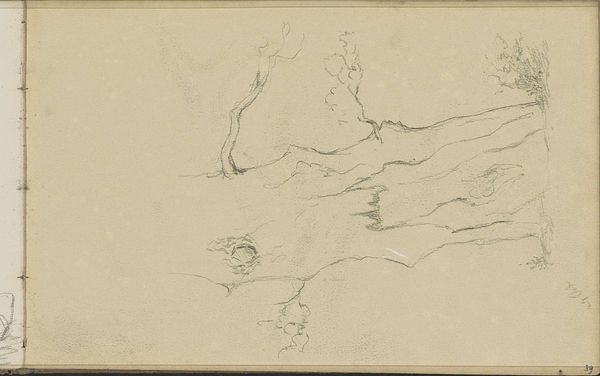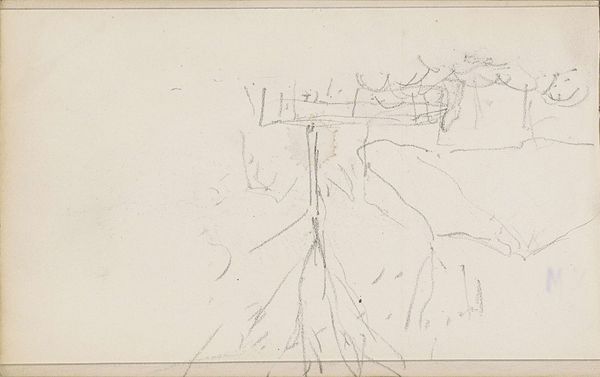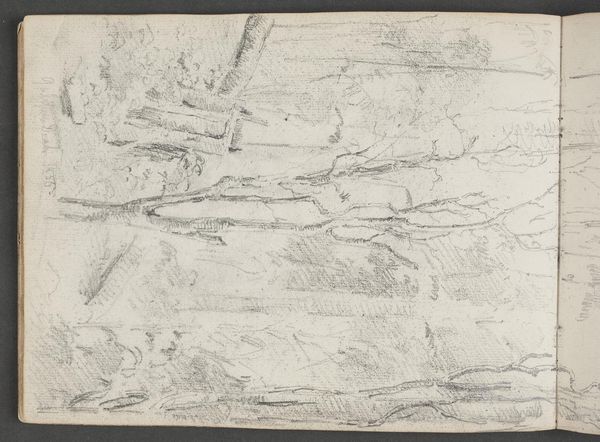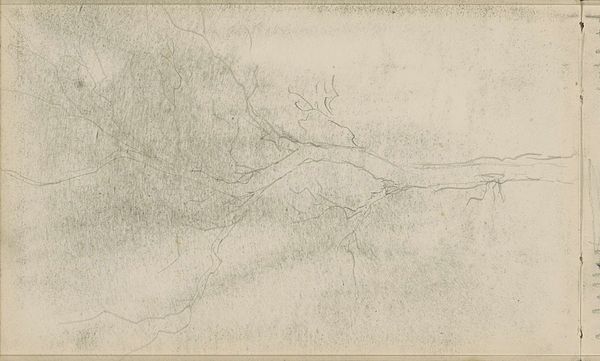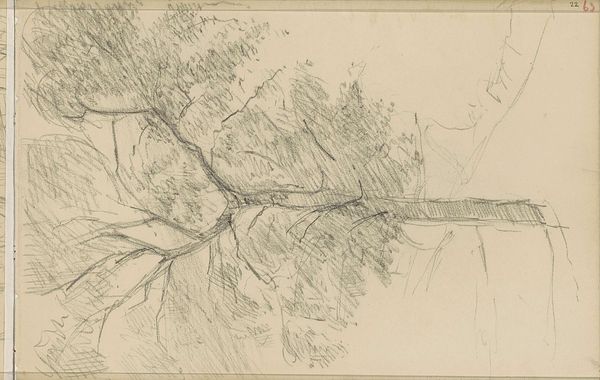
Copyright: Rijks Museum: Open Domain
Curator: This sketch, held here at the Rijksmuseum, is entitled "Trees with Bare Branches," attributed to Anton Mauve, likely created sometime between 1848 and 1888. It’s a work rendered in pencil. Editor: Immediately, I sense a vulnerability in this sketch. The bare trees, so exposed. There's almost a bleakness, a stark realism that contrasts with typical romantic landscapes. Curator: I see what you mean. However, consider the symbolic language here. Trees, particularly bare ones, have been symbols of resilience and dormancy across cultures. They suggest a waiting, a promise of future life and growth, a theme resonant within the Romanticism of the period. The delicate lines feel like a memory being carefully preserved. Editor: While the "promise of future life" certainly speaks to the cyclical nature inherent in the symbolism of trees, the social conditions in Europe in the latter half of the 19th century might make us reconsider the intentionality behind any "promise". Rural communities were being displaced and uprooted due to industrialization; land was being enclosed and privatized at rates previously unseen. Doesn't the rendering of these barren trees read as a subtle commentary on that dispossession? Curator: It's a compelling reading. But isn’t it just as likely that Mauve, steeped in the Dutch landscape tradition, simply aimed to capture the natural world around him? The seeming emptiness can evoke a sense of quiet contemplation, inviting viewers to project their own experiences and emotions onto the scene. The very lack of explicit narrative becomes the point. Editor: I’d counter that even a "lack of explicit narrative" can carry meaning, a visual representation of absence or loss. Who determines what’s “explicit” in any case? The absence of leaves speaks to an absent future for those who found their livelihoods bound to the land. We must read artistic choices within their historical contexts and consider all angles. To ignore the social implications seems a disservice. Curator: Perhaps you're right, perhaps there's no single, definitive meaning. Art often holds multiple layers, echoing different truths across time. Editor: Agreed. And grappling with those layers allows us to connect more deeply with both the artwork and the world it reflects, past and present.
Comments
No comments
Be the first to comment and join the conversation on the ultimate creative platform.


